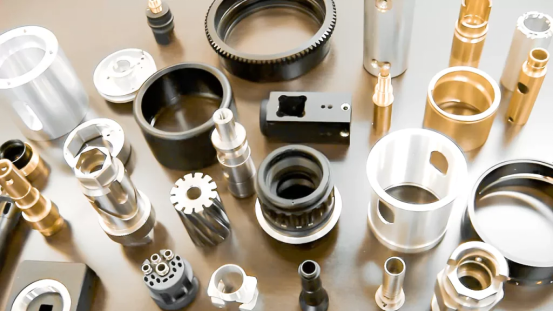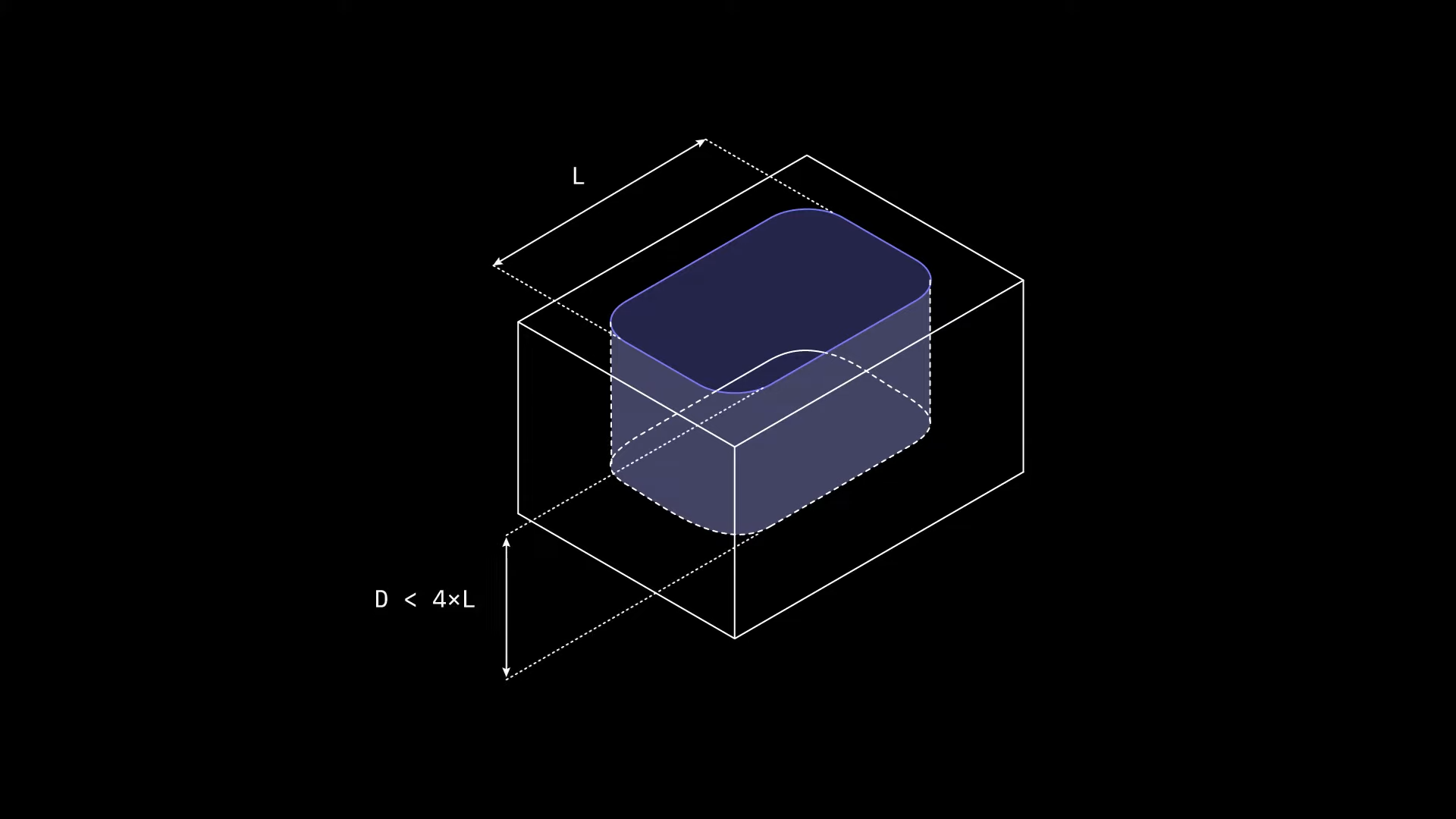12 Tips for How to Design Parts for CNC Machining
 Sep 24,2024
Sep 24,2024

It’s difficult to design parts form CNC machining. This article offers you the 12 best tips to design the parts and improve manufacturability. This article will be covering the main 12 tips to increase the productivity in the domain of CNC machining.
Types of CNC Machines and Processes
Grinding and milling became easier by utilizing CNC machines including lath and milling machines. Every machine has its features, so knowing the features of every machine helps to design the part accordingly. Selecting the right machine, according to its features greatly affects the cost and reliability of the part.

Key CNC Machining Limitations
CNC machine works best when the regarding part has some hardness. Like during CNC machining, part being in the process must bear the load, so toughness is important. CNC machine lacks in working with soft materials like polymers, and brittle materials like ceramics.
Machine Specific Constraints
Several axis and the size of the machine also affects the complexity of the part for machining. 3-axis CNC machines and 5-axis CNC machines have different features 5-axis can accommodate bigger size parts as compared to 3-axis machines.
Tip 1: Avoid Excessively Thin Walls
The parts being machined have very thin walls that easily bend down or break during machining.
Impact of wall thickness on part stability
The thickness of the walls of parts for CNC machining greatly affect their stability because thin walls can be bent, warped of break during machining. Metals with thin walls will be difficult to work with because of their instability.
Recommended wall thickness for different CNC materials
according to some rules and regulations, metal parts must have a wall thickness of at least 0.8mm and plastic parts must have at least 1.5mm wall thickness.
Tip 2: Design Cavities with Proper Depth-to-Width Ratios
Deep cavities cause many issues like they are difficulty to machine and deflection of tools which affects the integrity of the part.
Optimizing design for cavity depth
An optimum design for cavity depth is required to work easily in a CNC machine. An optimum depth-to-width ratio of 4:1 is suitable for almost every material and is recommended to avoid issues like tool deflection etc.
Ensuring structural integrity in deep designs
A 4:1 depth-to-width ratio helps in avoiding excessive removal of the materials which causes a cost reduction and increases the integrity of the part.
Tip 3: Use Standard Hole Sizes
Standard hole size offers many advantages like precision, fast production, consistency, compatibility ease of replacement, etc.
Importance of using standard CNC tools
Using standard hole sizes helps in saving time, machining, removal of the excessive material and hence save the cost. We should customize diameters only when they are necessary.
For further information, watch these useful videos
Tip 4: Add Radii to Internal Corners
Adding radii to internal corners is beneficial in many ways which include reducing stress concentration points and tool wear by providing good machinability.
Benefits of adding fillets for smoother machining
Addition of radii to internal corners cause reduction in machining time and tool wear. The radii increase the life of the part because sharp corners are stress concentrators which eventually cause failure.
Recommended radius dimensions to prevent tool wear
A good rule of thumb for better CNC machining is that subjective part should have at least 1/3 of the cavity depth.

Tip 5: Avoid Features That Cannot Be Machined
Many features make machining difficult which are discussed briefly down here.
How to identify non-machinable geometries
The parts which have undercuts are very difficult to machine, that’s why you should avoid these undercuts in your designs. The parts which have words etc. on them are difficult to machine.
Simplifying complex features for easier CNC manufacturing
Simplify your designs for better CNC machining. Avoid undercuts or complex designs or geometry on your parts. Consult with the CNC machine operator while designing your part.
Tip 6: Avoid Excessive Use of Tight Tolerances
The parts that require tight tolerances are always difficult to machine, they need a lot of care and time and so increased cost.
Balancing precision and cost
It becomes difficult to keep balancing between the precision of the exact size and cost. So, during designing the parts, an allowance of tolerance is always beneficial in terms of saving the time or cost.
Where tight tolerances are necessary for part performance
The parts like holes for fasteners, gear teeth or load-bearing shafts require tight tolerance. These parts can be seen in the following figure:
Tip 7: Limit Thread Length
It is important to have optimum size of thread length for many reasons which are discussed here.
Why long threads increase machining difficulty
The long threads increase cost because of increased machining which ultimately increases the usage of energy.
Best practices for threading in CNC machined components
The best practice for threading is to control thread size to 1.5 times of hole diameter. Greater than 1.5 times, it does not increase strength as a result it just increases working time and cost.
Tip 8: Avoid Unnecessary Aesthetic Features
Any unnecessary feature is just a waste of time and energy so it increases the cost. Following figure is showing CNC is adding aesthetic features to a part:
Reducing machining costs by focusing on functional features
During designing, your primary focus should be on the functionality of that part, then cost. The addition of aesthetics is a secondary need because they are related to the looks only.
When aesthetics is critical and how to balance with performance
Adding a logo, an aesthetic logo is critical to design on every part or product. To increase efficiency and effectiveness, you should use other techniques like laser engraving etc.
For a better understanding, you can watch the following YouTube video;
Tip 9: Consider Part Orientation During Design
Part orientation is very important and discussed briefly in below:
Impact of orientation on tool paths and machining time
Accurate orientation of the parts during the machining process saves time and energy hence the cost. It prevents the tool from wearing and deflection.
Designing for optimal CNC machine setup
The design of the part should be such that its orientation is easy, don’t require multiple setups. The design which requires filliping the part should be avoided.
Tip 10: Avoid Unnecessary Text and Lettering
Sometimes text and lettering are required on the parts but must be avoided where they do not need.
Challenges of machining small fonts and text
Adding small fonts and text requires very careful working. They require tight tolerance. So, they must be used where they are very important.
Alternatives to text-based branding
Use simple logos or labels after the production of the products.
Tip 11: Understand the Role of Undercuts
To improve the locking and aesthetics while assembling different components of any machines or tools. Undercuts serve functions while fixing.
Why undercuts are difficult to machine
Machining of such features is difficult as close tolerance is required and undercuts are created by using multiple tools. %-axis CNC machining is recommended for this purpose.
Tip 12: Use 5-Axis CNC Machining for Complex Parts
5-aixs CNC machine is more advanced than 3-axis CNC machine. It can accommodate larger parts easily and helpful in difficult designed parts like undercuts or texturing etc.
Advantages of 5-axis machining for intricate designs
Larger parts and design of difficult geometry can be easily machined in a 5-axis CNC machine. It saves machine time.
When to choose 5-axis CNC over 3-axis CNC
The parts that require intricate features or multi-faceted machining you should use 5-axis because it reduces time for multiple setups and improve accuracy.
CNC Machining Parts Manufacturer: Tuofa China
If you are in a search of a reliable partner for the machining of your parts, come to Tuofa China. We provide customized machining solutions for various industries problems related to CNC machining while ensuring reliability and fast turnover rate.
 Tel/WeChat:
Tel/WeChat:  Email:
Email: 
 Home
Home
 Small Parts Machining: Precision Engineering for Complex Components
Small Parts Machining: Precision Engineering for Complex Components 







